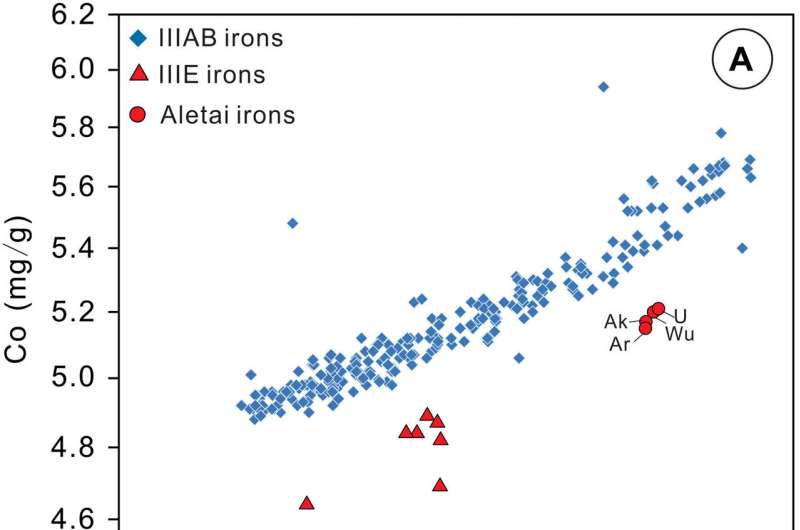During their entry to Earth, meteoroids and asteroids can deposit energy, causing great concerns to astrophysicists. Recent discoveries of the massive Aletai irons in Northwest China constitute the longest-known strewn field, approximating 430 kilometers, that indicate this unique process. Using petrographic and trace elemental studies, scientists suggest that Aletai masses exhibit unique compositions, and therefore may be from the same event.
In a new report now published in Science Advances, Ye Li and a team of scientists at the Chinese Academy of Sciences, the University of Arizona, U.S., and the Institute for Nuclear Research in Hungary, used numerical models to suggest the stone skipping–like trajectory is associated with a shallow-entry angle to facilitate the exceptionally long-strewn field for a single-body entry scenario. While the trajectory of stone-skipping would not contribute to a large impact energy on the ground, the team believes it could lead to energy dissipation during its extremely long-distance flight.
Meteoroids entering Earth’s atmosphere
Meteoroids and asteroids can invade the Earth’s atmosphere at different entry angles and velocities to break into fragments in the atmosphere and fall as meteor showers to create funnels and craters. During the process, meteoroids and asteroids can deposit large amounts of kinetic energy causing explosions and affecting the ecosystem. It is therefore crucial to understand how meteoroids fall through the atmosphere. The massive Aletai irons were first recovered in the Aletai region in Northwest Xinjiang, China, close to the China-Mongolia Border. The extraordinary long-strewn field implies the trajectory or dynamics of the asteroid Aletai to be unique. In this work, Li and the team conducted a comprehensive study of petrology and whole-rock trace element geochemistry with radionuclide analysis and numerical modeling for Aletai irons. The outcomes showed a 430-km-long strewn field.

Trace elements versus Au for Aletai irons. Aletai data from this study, and IIIE and IIIAB data for comparison. IIIAB data from Chabot and Zhang. IIIE data from Malvin et al. and online Meteoritical Bulletin Database (www.lpi.usra.edu/meteor/metbull.php). U, Ulasitai; Wu, Wuxilike; Ak, Akebulake; Ar, Armanty. © Science Advances (2022). DOI: 10.1126/sciadv.abm8890
The experiments
Researchers had previously conducted petrographic studies for some large masses and in this work, the team performed detailed mineralization studies for previously